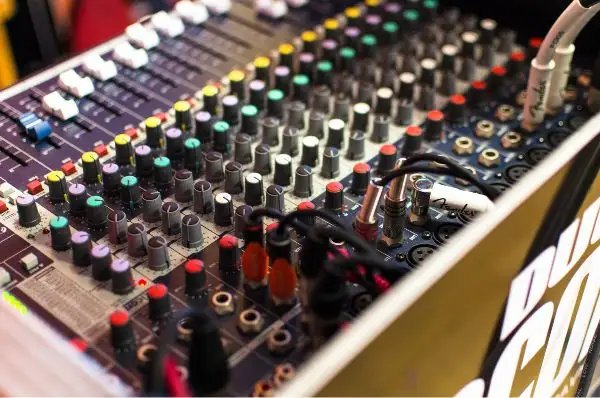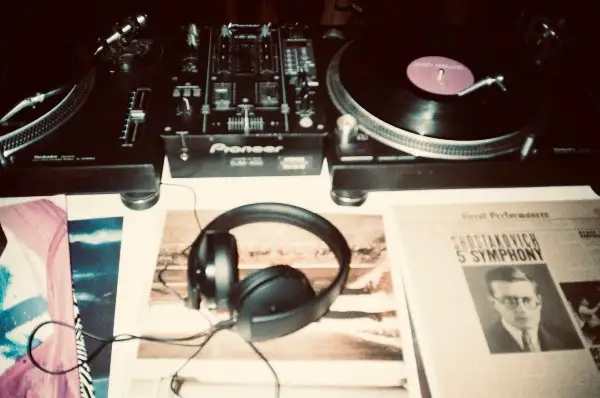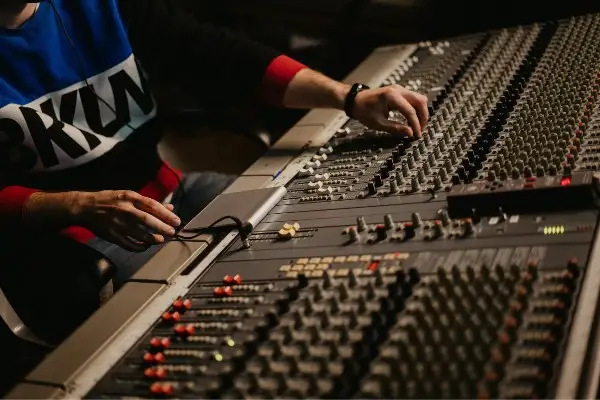Have you ever recorded live guitar or vocals only to get excessive background noise or static? Your signal to noise ratio might be off - this value determines the quality of your audio signal according to your fidelity and noise levels.
Understanding your signal power is key to producing a clear, polished recording . Below, we'll break down everything you need to know about evaluating signal to noise ratio throughout the recording process.
What Is the Noise Floor in a Mix?
Before we explain the concept of signal to noise ratio, it's important to understand the concept of the noise floor. Whenever you use a piece of hardware gear, the system generates a small amount of noise that's necessary for the item to function. It's advisable to have as low of a noise floor as possible so that this noise is practically imperceptible in the recording.
What Is the Clipping Point?
If the noise floor is the lower limit of recorded sound in terms of volume, the upper limit is the clipping point. This is the point at which the input signal and hardware sound are so loud that the signal quality becomes distorted , creating harsh dissonance with overpowered signal strength.
You probably intuitively know what clipped audio sounds like. The distance between the noise floor and clipping point is the sweet spot for signal recording and signal processing. Through the power of gain staging, we can achieve an ideal signal to noise ratio (discussed below) that isn't so quiet that we only hear the signal and noise or so loud that the audio signal starts clipping .
Understanding Headroom
You might hear audio engineers use the term "headroom". Headroom refers to the distance between an audio signal's clipping point and noise floor. Generally speaking, mixing engineers are advised to leave 3 to 6 decibels of headroom in the mix so that it does not move past the clipping point while mastering.
What Is a Signal to Noise Ratio?

Signal to noise ratio, also referred to as SNR, is a measurement value used to evaluate the relationship between your desired audio signal and unwanted background noise in an audio recording. A high signal-to-noise ratio will make your noise floor less audible and help your desired signal shine through the mix.
The most important thing to remember is that a high signal to noise ratio is good because high SNR increases the sound of your desired electrical signals in contrast to your undesired signal or noise. For example, you might see desirable gear listed as having high SNR.
Gear with a low signal to noise ratio produces a lot of random noise in order to work. This is generally less desirable when you're looking for a clean cut recording, but in some cases, especially when utilizing analog devices, this noise might be part of the sound's distinguished character.
There are no hard and fast rules in music, though understanding a piece of equipment's SNR values is undoubtedly useful information that will make it easier for you to have a better understanding of what to expect while recording.
What Is a High Signal-to-noise Ratio (SNR) VS a Low Signal to Noise Ratio?

You'll see equipment listed for all types of professional audio tied to a specific signal to noise ratio. Audio engineers, producers, podcasters, and broadcasters all have to understand this data and use the SNR measurement to fine tune their recording environment. However, different audio use cases require various minimum SNR rates.
For music, it's advisable to have at least 60 decibels of signal in relation to noise in order to capture a clear recording. This value may be lower for other use cases, though the more signal power you can get, the better for clarity purposes.
How to Calculate Signal to Noise Ratio
In most cases, the signal to noise ratio or SNR rate will already be calculated and listed by the manufacturer of a piece of gear. In the event that you need to calculate your signal to noise ratio, use the following formula:
SNR = 10 × log(signal power / noise power) | Signal power represents the power of a signal and noise power represents the power of the noise both represented in Watts. The final SNR ratio is expressed in decibels.
Signal to Noise Ratio FAQs

Are you still struggling to understand how signal to noise ratios work? Consider these commonly asked questions and answers:
What is a good signal-to-noise ratio?
In most cases, a signal level of 60 dB or more in relation to the audio signal can be considered good for audio engineering purposes. The higher the ratio, the better, since this means that the audio signal is much louder than the noise level.
Why is a higher signal-to-noise ratio better?
You want to eliminate as much noise as possible while still capturing the sound of the audio signal. Therefore, the more signal power you can get relative to noise power, the better.
What is a bad signal-to-noise ratio?
A bad signal to noise ratio in audio recording may be 30 to 1 or lower. However, in cases where you aren't recording music, you may be able to get away with more noise, and therefore lower SNR ratios (as in the case with talking on the phone, podcasts, etc.).
What does a signal-to-noise ratio of 1 mean?
A SNR ratio of 1 means that you can hear 1 dB of signal power and 1 dB of noise power, written as 1:1. This is not a very good SNR, since your desired signal ends up with the same power as the unwanted noise.
Hence, signal to noise ratio is a spectrum that can help us understand what we can expect when recording with hardware equipment. Knowing this parameter upfront can give you a good concept of what to expect during the recording process. Use your knowledge of SNR ratios to create a powerful signal input on all of your mixes.





